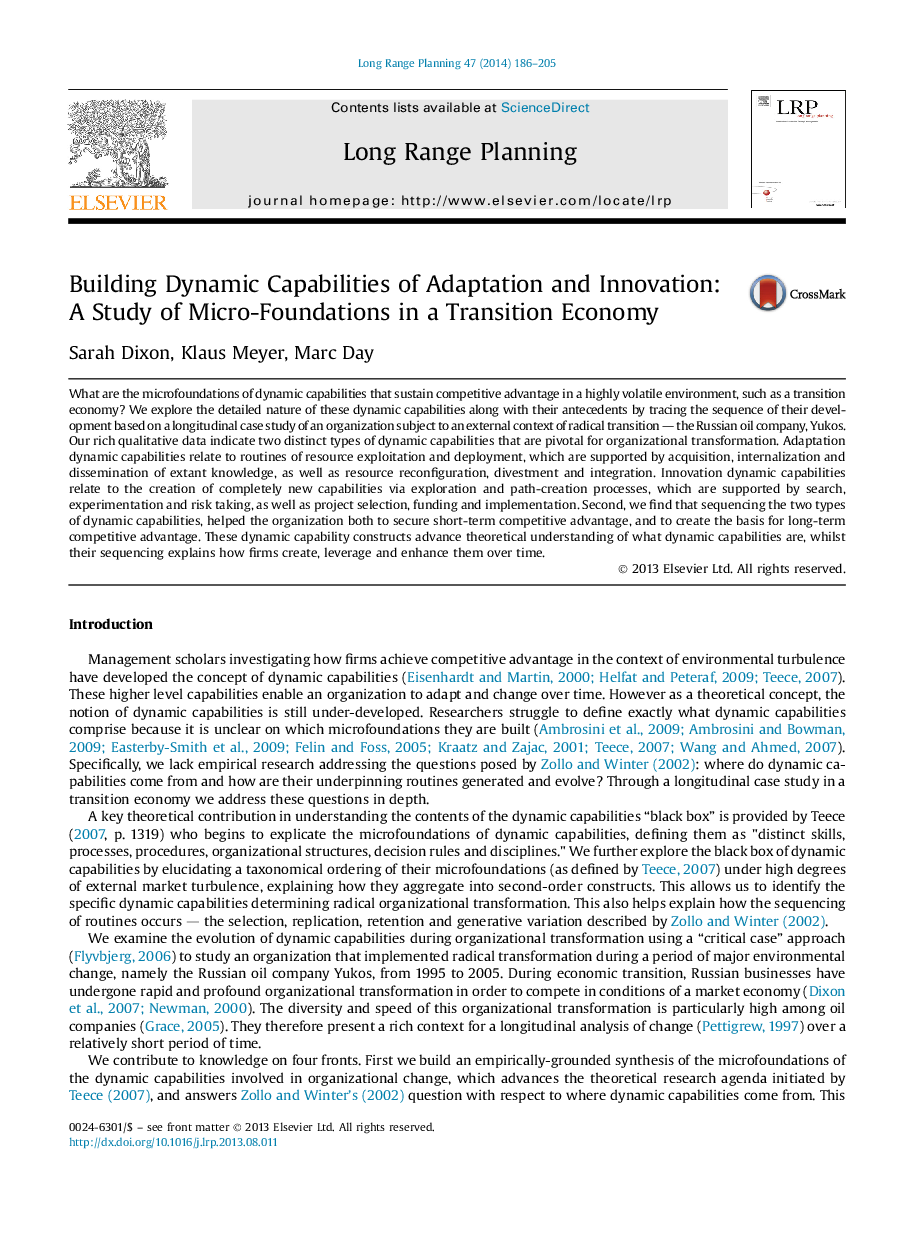| Article ID | Journal | Published Year | Pages | File Type |
|---|---|---|---|---|
| 1021268 | Long Range Planning | 2014 | 20 Pages |
What are the microfoundations of dynamic capabilities that sustain competitive advantage in a highly volatile environment, such as a transition economy? We explore the detailed nature of these dynamic capabilities along with their antecedents by tracing the sequence of their development based on a longitudinal case study of an organization subject to an external context of radical transition — the Russian oil company, Yukos.Our rich qualitative data indicate two distinct types of dynamic capabilities that are pivotal for organizational transformation. Adaptation dynamic capabilities relate to routines of resource exploitation and deployment, which are supported by acquisition, internalization and dissemination of extant knowledge, as well as resource reconfiguration, divestment and integration. Innovation dynamic capabilities relate to the creation of completely new capabilities via exploration and path-creation processes, which are supported by search, experimentation and risk taking, as well as project selection, funding and implementation. Second, we find that sequencing the two types of dynamic capabilities, helped the organization both to secure short-term competitive advantage, and to create the basis for long-term competitive advantage. These dynamic capability constructs advance theoretical understanding of what dynamic capabilities are, whilst their sequencing explains how firms create, leverage and enhance them over time.
